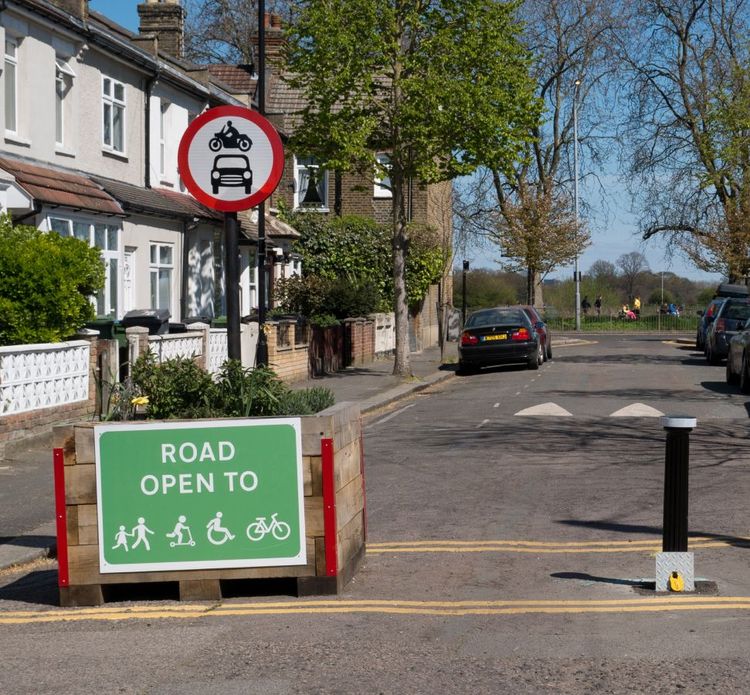In this article, we will discuss how LTNs can support local governments to build happier and healthier communities. We will explore what LTNs are, the key elements of a successful LTN, and how bike-sharing can strengthen their impact.
Low-Traffic Neighbourhoods: Building 15-Minute Cities with Sustainable Mobility

Low-Traffic Neighbourhoods (LTNs) play a crucial role in creating a sustainable, healthy, and accessible environment for cyclists and promoting active travel in cities. By encouraging cycling, LTNs can help to reduce air pollution, improve economic connectivity, and contribute to the development of 15-minute cities.

What are Low-Traffic Neighbourhoods (LTNs)?
LTNs, also known as Living Streets, pedestrian-friendly neighbourhoods, or car-free neighbourhoods, are designed to promote active travel and prioritise people over vehicles. They consist of the following key elements:
- Connections to public transportation: LTNs should be easily accessible by public transportation, including buses and trains, to encourage residents to switch between modes of transportation.
- Reallocation of road space: By reallocating road space to create more space for cycling, LTNs make cycling a more attractive mode of transportation.
- Traffic calming measures: Measures such as speed humps, chicanes, and planters help reduce vehicle speeds and create safer environments for cycling.
- Accessible cycle routes: LTNs should feature cycle routes that are separated from motor traffic and have a smooth and continuous surface.
- Supportive infrastructure: LTNs should have supportive infrastructure such as bike storage, repair stations, and cycle-friendly cafes to encourage cycling.
How to Successfully Implement a Low-Traffic Neighbourhood
Not all Low Traffic Neighbourhoods are identical, and it’s important for local government to consider what elements will work best in their area. When designing it’s valuable to start with a traffic analysis, which is great at understanding existing traffic patterns, speeds, and volumes. Such an analysis will help identify opportunities for reallocating road space and reducing through-traffic.
It is also important to engage with the local community to understand their needs and concerns, and to gain their support for the LTN before it’s implemented. LTNs can have many social, health and economic benefits which people may not be aware of or understand well.

Waltham Forest, which was one of the first LTNs in the UK is often cited as a successful example of an LTN. The local government closed several rat-runs (side streets that can be used as shortcuts) and introduced traffic calming measures and pedestrianisation to reduce vehicle speeds and make streets safer for cyclists. Traffic counts after implementing the LTN, show that on average the number of vehicles on roads within the Village have decreased by 44%, and only 1.7% of residents would scrap the scheme and go back to how it was.
Waltham Forest's Low Traffic Neighbourhood has not only made the area safer for pedestrians and cyclists, but it has also increased foot traffic to the area. This increase in foot traffic has been beneficial for local businesses, as it has resulted in more customers visiting shops and supporting the local economy. The reduction in through-traffic has created a more pleasant environment for people to walk and shop, making the area more attractive to visitors and further boosting the local economy.
Newcastle also showed that a LTN can support more active and healthier lifestyles. One of the major concerns when deciding to walk or drive children to school is road safety and pollution levels. According to WHO, 99% of the planet breathes in unsafe air according to WHO guidelines, so local governments are looking at initiatives like LTNs, to support healthier cities. Implementing LTNs helps decrease traffic, and therefore pollution—making streets safer for more people to walk/cycle to school or work.
Strengthening the Impact of Low-Traffic Neighbourhoods with Bike Sharing Schemes
Bike-sharing schemes have been instrumental in supporting low traffic neighbourhoods (LTNs) and promoting sustainable and active lifestyles in cities. In Paris, the Vélib' bike-sharing program has played a crucial role in reducing traffic and promoting cycling as a daily mode of transportation. The widespread network of bike stations and affordable pricing options have made cycling accessible and convenient for everyone, leading to increased use and a higher density of cyclists in low-traffic neighbourhoods.
Since its launch in 2007, Vélib' has been a huge success in Paris, with over 100 million trips taken and over 800,000 cycling trips taken each day. This has not only contributed to a decrease in traffic volume but also to improved air quality and a strengthened local economy. By offering a comprehensive solution for promoting cycling, Vélib' has been instrumental in supporting the development of low-traffic neighbourhoods in Paris and creating healthier, more livable communities for all.
If you're looking to make the most of your low traffic neighbourhood initiative, our team of bike-sharing experts would be thrilled to make your LTN more impactful. By combining the benefits of low traffic neighbourhoods with the convenience and accessibility of bike-sharing, you can create a more liveable and sustainable city for generations to come. Get in touch with us today and see how we can help you take your low traffic neighbourhood to the next level.

